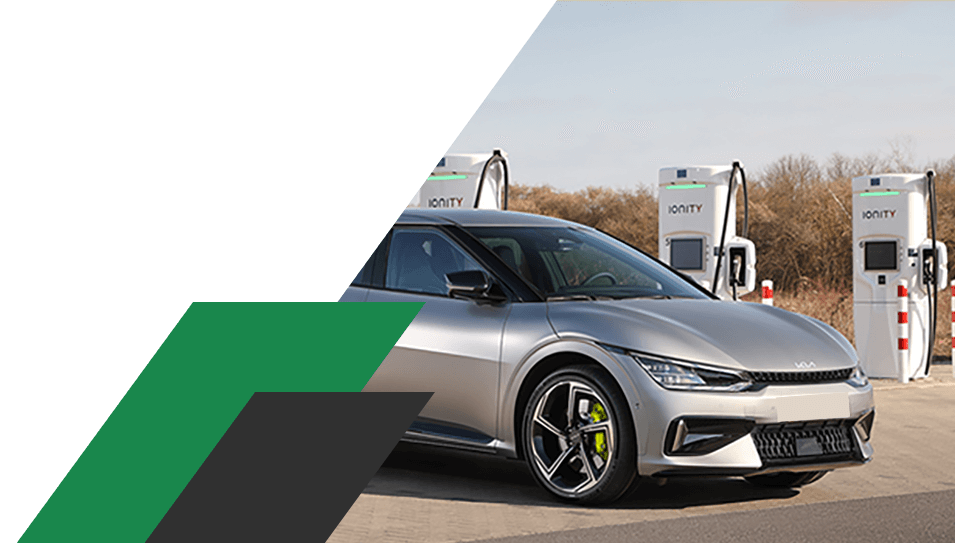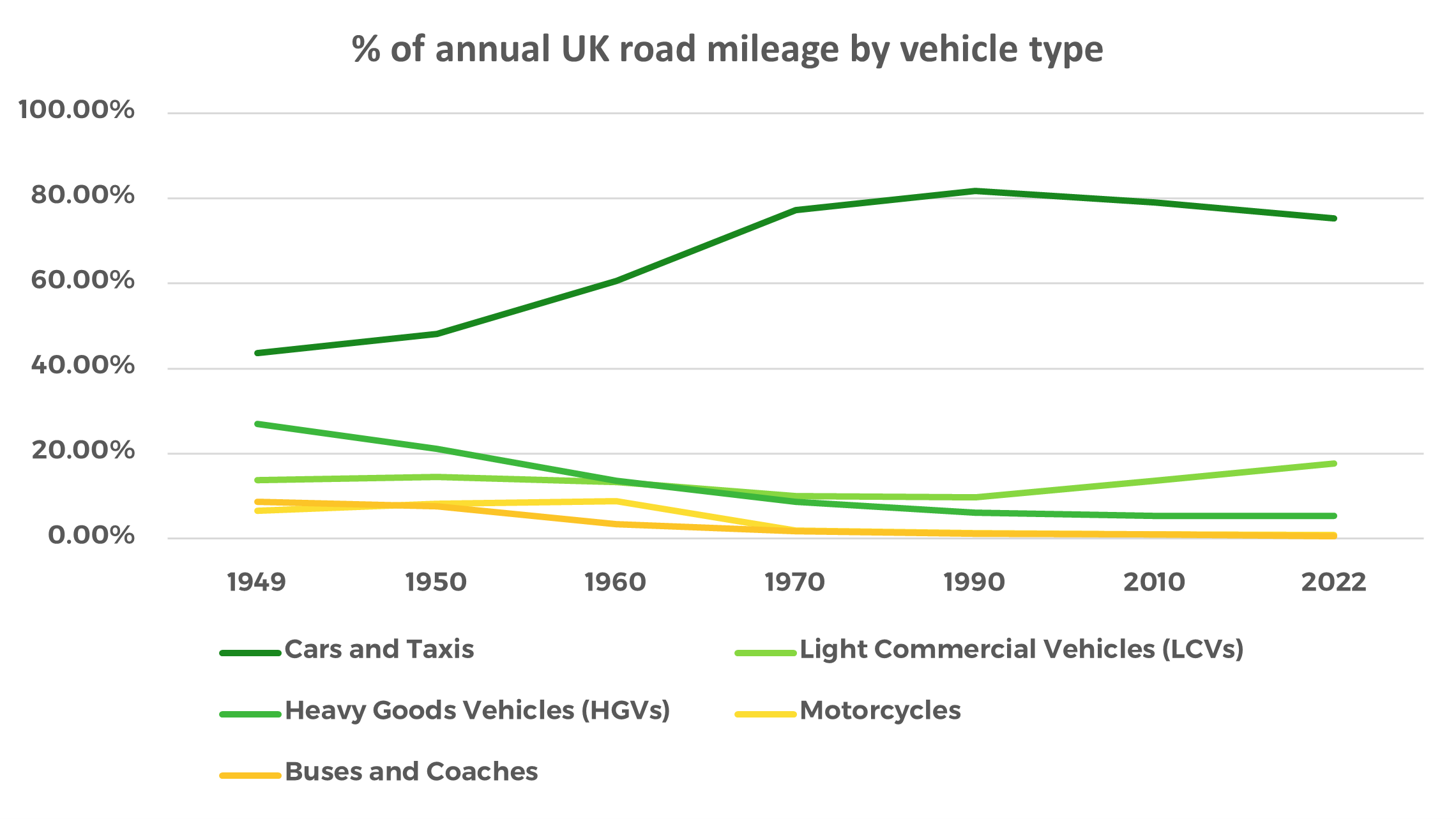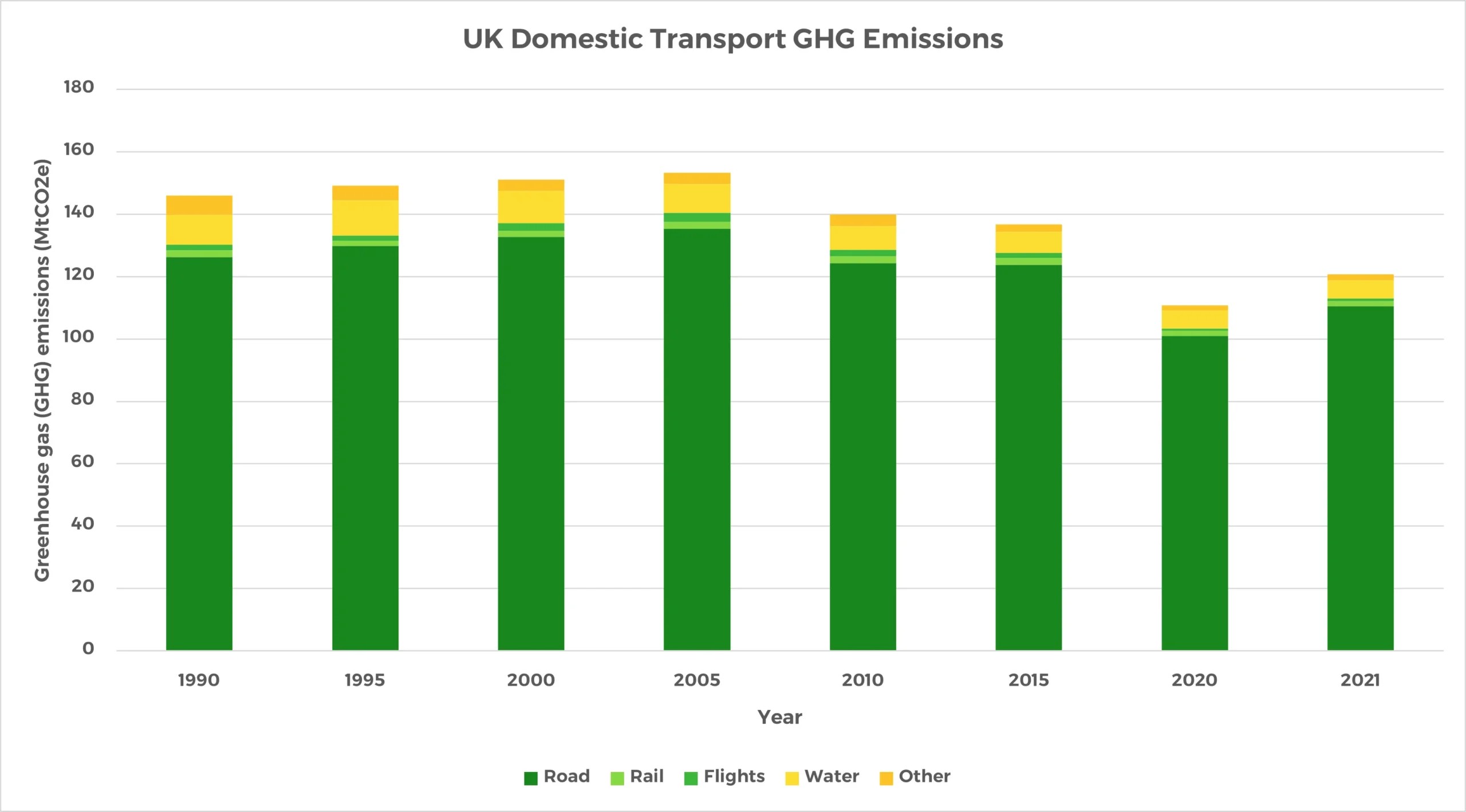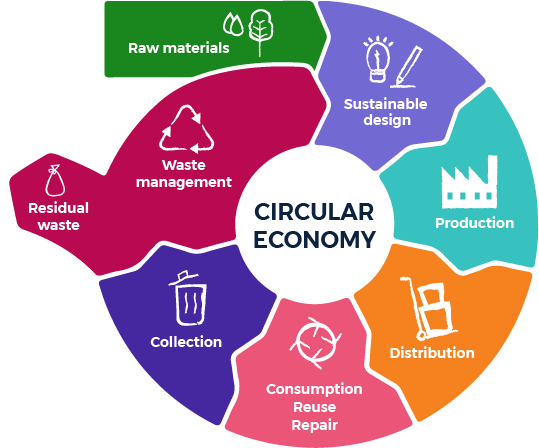As the largest independent leasing company operating in the UK’s most significant carbon-emitting sector, we have a vital role to play in helping create a stable planet for future generations. From educating people on our industry’s important issues to raising awareness of the key actions being undertaken, we’re determined to deliver a positive impact for the planet, people, and society through sustainable and diverse vehicle solutions. As we launch our People Powered Impact plan, we’re reflecting on the key developments within the automotive industry that have led us to where we are today.
Mark Wilson, Sustainability Manager

History of road transport
Over the last 70 years the UK has experienced an unprecedented mobility revolution. Car ownership has increased exponentially, enabling people to get from A to B easily and unlocking a level of freedom unimaginable to previous generations. However, this has come at a great cost to the environment through increased greenhouse gas (GHG) emissions.
The car industry is now going through a second revolution to decarbonise – the ultimate aim is to create a sustainable road transport industry that provides all the benefits of easy travel without damaging the climate.

The first mobility revolution
Vehicle ownership has steadily increased since the 1950s. According to research by the Department of Transport, less than 20% of households owned a car in the 50s. As a nation, we passed the 50% marker in the 1970s, and now almost 80% of UK households own one or more cars1.
Inevitably, increased vehicle ownership has resulted in the total mileage driven by Britons rising each year for the past 60 years. In 1949, 28.9 billion miles were driven on UK roads. Of this, cars and taxis accounted for 12.6 billion miles (44%). Fast forward to 2022 and there were 323.8 billion miles driven on UK roads, with 244 billion of those driven by cars and taxis (75%). This represents a twenty-fold increase in the mileage being driven in cars and taxis from 1949 to 2022. We’re clearly travelling more for both work and social purposes. Many people’s weekends are spent driving to see friends and family, along with staycations becoming increasingly popular – all this increased mobility has a damaging impact on the planet.

The impact of GHG emissions
The first mobility revolution benefited our lives, but it certainly came at a cost. We’re now aware that the industry has had negative consequences on the environment, specifically climate. According to the latest figures provided by the government in 2022, the transport sector was the UK’s most significant carbon-emitting sector, accounting for approximately 34% of total CO2 emissions2.
Over the last 30 years, actions have been taken by the industry to reduce GHG emissions, such as the introduction of regulatory fuel standards for all new vehicles. An example within the EU and UK is the EU1 standard introduced in 1992, with the most recent being EU6 in 2014. These standards ensure that all new vehicles sold within the EU and UK meet legal limits of GHG tailpipe emissions.
By following these standards, despite increased vehicle ownership and use, the sector’s annual emissions have remained similar to 1990 levels, and have actually reduced from a 2007 high of 140 MtCO2e. Despite this, it’s clear that further change and innovation is required to ensure the industry reaches net zero.
Transport’s annual emissions reduction is impressive considering that the total annual mileage of all motor vehicles increased from 255 billion miles in 1990 to 323 billion miles in 2022, with car and taxi mileage increasing from 208 billion miles to 244 billion miles. There’s obviously still a long way to go to ensure that our transport usage and choices helps the UK to achieve net zero by 2050 though.

The second mobility revolution
The innovation in alternative fuels – especially the adoption of Battery Electric Vehicles (BEVs) – launched the second mobility revolution. One with all the benefits of vehicle ownership, but with a large focus on environmental sustainability.
Battery electric vehicles
The BEV market has grown rapidly, especially within business fleet. For example, Zenith’s own funded car fleet now stands at 39% BEV (as at end of December 2023). In addition, the number of BEV model options has increased five-fold over the last three years to provide consumers with more choice, with over 90 models now being available in the UK compared to less than 30 in 2020.
Whilst electric vehicles remove tailpipe emissions, they do still have an environmental impact throughout their lifecycle. A 2022 UK Government report on the ‘Lifecycle analysis of UK road vehicles’ found that currently over 50% of BEVs lifecycle emissions are from its production. This reduces to almost 90% if the electricity is generated using renewable energy3. Therefore, further innovation is required by the industry to ensure cars can achieve net zero, particularly in the production and manufacturing process of battery electric vehicles.
The industry must move towards a circular economy model to ensure that BEV’s production emissions reach net zero. This involves innovating to ensure that waste is eliminated through the adoption of reduce, re-use and recycle principles at all stages of a vehicle’s lifecycle. We must shift to manufacturing parts and products with the minimal raw materials required, utilising recycled products as much as possible and re-using products at the end of a vehicle’s lifecycle.

Other alternative fuels
Other alternative fuels do exist within the road transport industry; however, these have not entered the market at the same rate as BEVs. Whilst the infrastructure is available, and continually developing, to support the BEV market, the same hasn’t occurred for other alternative fuels such as hydrogen and biodiesel.
For specific vehicle types and journeys covering longer distances, these fuel types do have a potential role. This is especially true if we had a reliable hydrogen refuelling station supporting essential road transport routes. Commercial fleet operators are attracted to this fuel type due to their potential range, higher payloads and significantly shorter refuelling times.
In January 2023 it was reported that there were only 300 hydrogen vehicles on UK roads and only 15 public hydrogen refuelling stations.
Biodiesel may also be used as an alternative to conventional petrol and diesel vehicles. In a Well-to-Wheel (WTW) assessment, biodiesel typically has Greenhouse Gas (GHG) emission savings of 25-85% compared to retail diesel. The emission savings is dependent upon the type of biodiesel used, ranging from B10 (10% biodiesel) to B100 (100% biodiesel).
There are several considerations in the transition to biodiesel. For example, we must consider vehicle compatibility and availability – existing diesel engines will need to be modified to use biodiesel. This can take a long time and be expensive for HGV operators, potentially preventing their transition.
On the other hand, the refuelling infrastructure is already available as biodiesel is commonly delivered to fleet depots with standard diesel storage. A negative is that B100 biodiesel does require additional equipment and management to store compared to standard diesel. In addition, high blend biodiesel is not available on retail forecourts and so this could present a barrier in its uptake.




